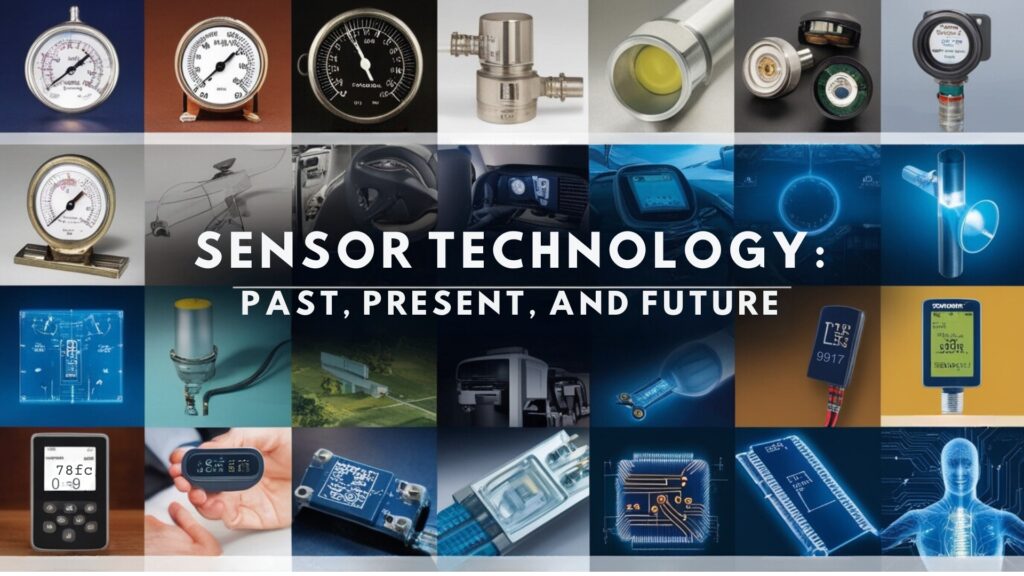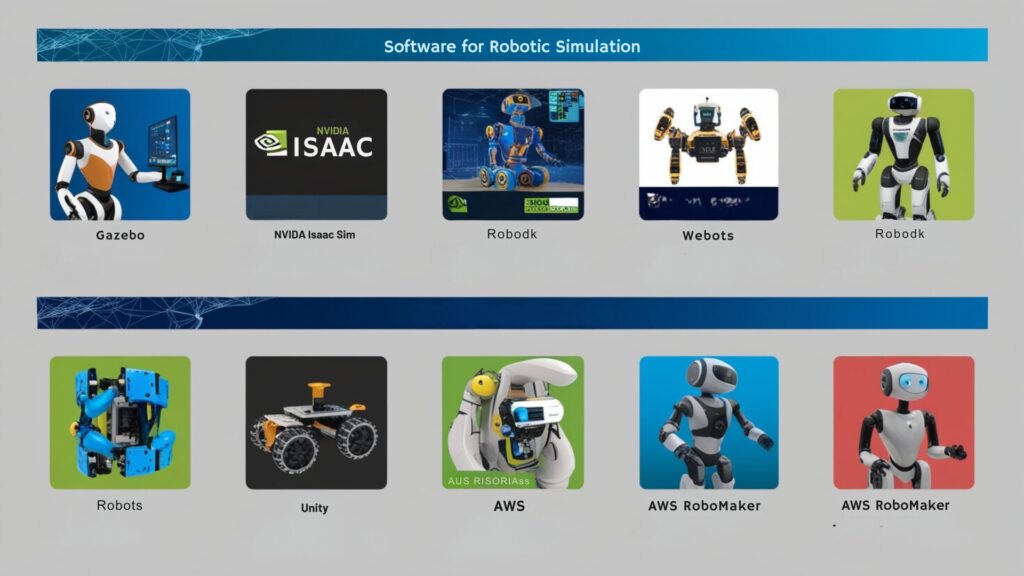
Introduction
Software for robotic simulation refers to a category of software tools that enable the design, programming, and testing of robotic systems in virtual environments. These platforms provide a cost-effective and safe alternative to physical prototyping, allowing developers and researchers to explore and refine robot behaviors without the risks associated with hardware experimentation. The rise of robotics in various industries, including aerospace, automotive, and healthcare, has heightened the importance of such software, as it aids in optimizing operations, enhancing safety, and reducing time to market.
Notable examples of robotic simulation software include Gazebo, NVIDIA Isaac SIM, RoboDK, Webots, Unity, and AWS RoboMaker. Each of these platforms offers distinct features, such as realistic physics modeling, advanced graphics, and extensive library support for various robotic applications. Gazebo is particularly renowned for its integration with the Robot Operating System (ROS), while NVIDIA Isaac SIM focuses on AI-driven simulations for high-performance applications.
These tools have revolutionized robotic development by facilitating sophisticated simulations that encompass machine learning, sensor integration, and control system design. Despite their advantages, robotic simulation software faces several challenges, including user interface design, error management, and technical constraints that can hinder usability and accessibility. Furthermore, ongoing developments in artificial intelligence and mixed reality technologies present both opportunities and obstacles in the field, as researchers strive to create more adaptive and realistic simulation environments.
Controversies in the field often center around the balance between simulation fidelity and computational efficiency, as well as the accessibility of these tools for a diverse user base. In summary, software for robotic simulation plays a pivotal role in the advancement of robotics, enabling engineers to prototype and iterate designs efficiently. As technology continues to evolve, the future of robotic simulation promises enhancements in adaptability, immersive learning experiences, and broader applications across various sectors.
Types of Robotic Simulation Software
Robotic simulation software enables developers and researchers to design, program, and test robots in virtual environments, providing a safe and cost-effective means to experiment without the risks associated with physical hardware.
Advanced Techniques and Features
Robotic simulation also involves advanced techniques, such as machine learning integration, to enhance robot adaptability. By utilizing reinforcement learning algorithms within simulations, developers can create systems that adapt and solve complex tasks autonomously . Additionally, simulations can emulate various physical attributes and performance characteristics, including kinematics, dynamics, and sensor simulations, which help in understanding motion and control systems.
Industry Applications
Different industries leverage robotic simulation for improved efficiency and safety. For instance, the aerospace industry utilizes simulations to optimize designs and operations, while the automotive sector employs them for quality assurance in manufacturing processes . The medical and construction industries also benefit from robotic simulations, aiding in surgical procedures and site automation, respectively .
Features of Robotic Simulation Software
Robotic simulation software encompasses a variety of features that facilitate the design, testing, and optimization of robotic systems in virtual environments. These features enable engineers and researchers to preemptively identify issues, refine robot behaviors, and conduct experiments without the constraints of physical hardware.
Core Features
Modeling and Environment Setup
The foundational aspect of robotic simulation software lies in its ability to model both the robot and its operational environment. Users can define the robot’s dimensions, kinematics, and dynamics, creating a virtual counterpart that accurately reflects real-world specifications. The environment setup includes designing a simulated space that mimics real-world conditions where the robot will operate, allowing for realistic interaction scenarios.
Sensor Integration
Advanced simulations allow for the integration of virtual sensors such as cameras, LIDAR, and other input devices. This integration is critical for testing and validating algorithms that process sensory data, enabling the robot to respond appropriately to its surroundings during simulations.
Control System Design
Robotic simulation software facilitates the design and implementation of control systems that govern a robot’s actions. By enabling the development and testing of control algorithms for navigation and task execution, these platforms provide an essential framework for refining robot behavior before physical deployment.
Types of Simulation
Physics-Based Simulation
Physics-based simulation is a key feature that utilizes mathematical models to replicate real-world physics accurately. This includes analyzing motion dynamics, simulating interactions with different surfaces, and accounting for factors such as gravity and friction. This approach ensures that robots behave as expected under various conditions.
Behavior-Based Simulation
In contrast, behavior-based simulation focuses on the decision-making processes of robots. This feature is particularly useful for testing artificial intelligence implementations, as it allows for the simultaneous evaluation of multiple behavior scenarios. By modeling stimulus-response behaviors, developers can better understand how robots make decisions in dynamic environments.
Popular Software Options
Various software options exist for robotic simulation, each catering to different needs and complexities. Popular choices include Gazebo, NVIDIA Isaac SIM, RoboDK, Webots, Unity, and AWS RoboMaker. Each software platform offers unique features, such as integration with real-world robotics hardware, advanced physics engines, and diverse programming capabilities, thus enhancing their utility in robotic development.
Applications Across Industries
Robotic simulation software is instrumental across various industries, including aerospace, automotive, medical, and construction. In these fields, simulations help design complex systems, optimize operations, and reduce risks associated with physical prototyping, leading to improved efficiency and safety.
Popular Robotic Simulation Software
Robotic simulation software serves as a vital tool in the design, programming, and testing of robotic systems within a virtual environment. It provides a cost-effective and safe method for experimenting with robotics, facilitating the development and refinement of robot behaviors and algorithms before physical construction takes place.
Gazebo
Gazebo is a free, open-source simulation platform that integrates seamlessly with the Robot Operating System (ROS). It is renowned for providing realistic physics simulations and supports the development of complex robotic systems. Gazebo allows users to create detailed environments and simulate a variety of robot behaviors, making it a preferred choice for many robotics researchers and developers.

Webots
Webots is a versatile robotic simulation software that supports various programming languages and comes with pre-built robot models. It allows developers to simulate a wide range of robotic applications and is particularly useful for educational purposes, offering tools that help students understand robotics concepts through hands-on experience.

NVIDIA Isaac SIM
NVIDIA Isaac SIM is an AI-driven simulation platform specifically designed for robotics development. It offers high-fidelity graphics and advanced physics, allowing developers to create realistic simulations that can incorporate machine learning and AI techniques. This software is particularly suited for developers looking to create and test robotic applications that require high levels of accuracy and performance.
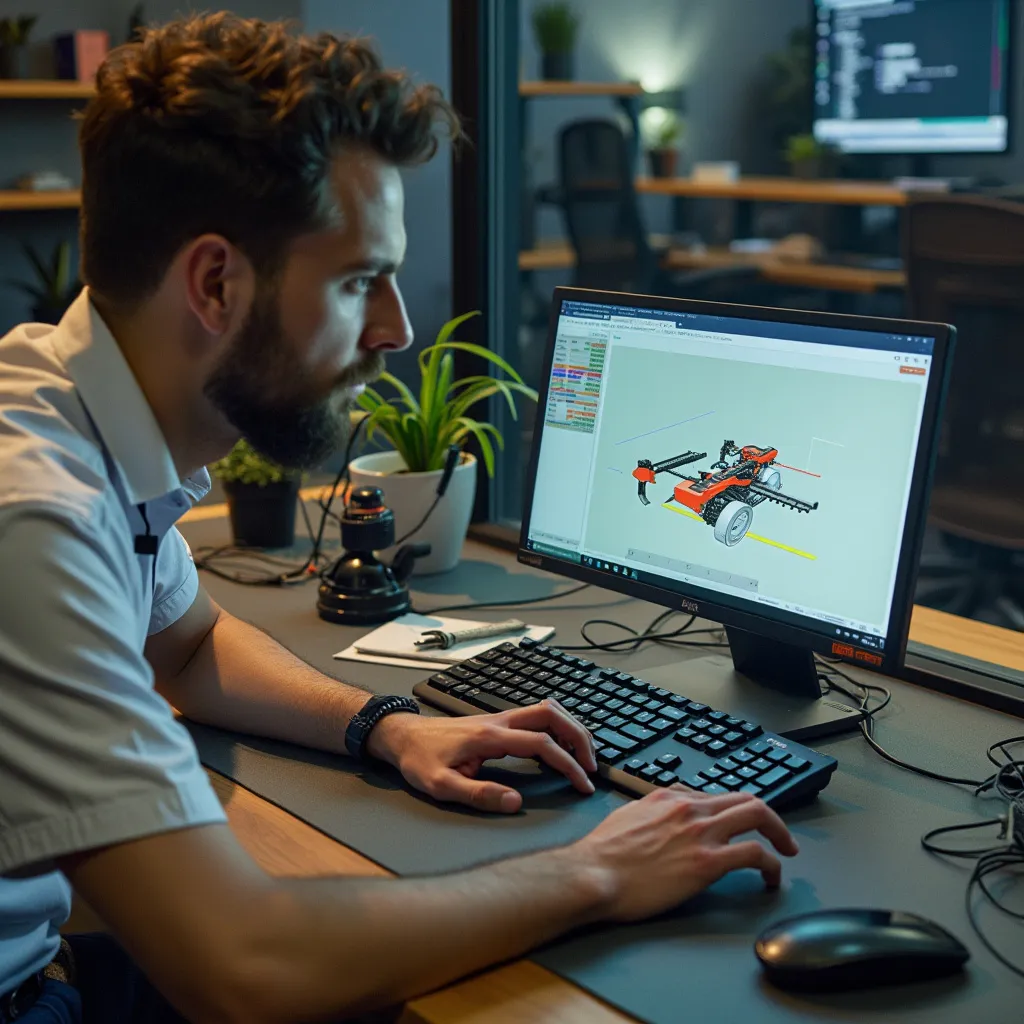
RoboDK
RoboDK is a user-friendly robotic simulation software that comes with a vast library of robots and peripherals. It is designed to facilitate robot programming and simulation, making it easier for users to visualize and test their robot’s actions before deploying them in real-world scenarios. RoboDK is well-regarded for its versatility and ease of use.
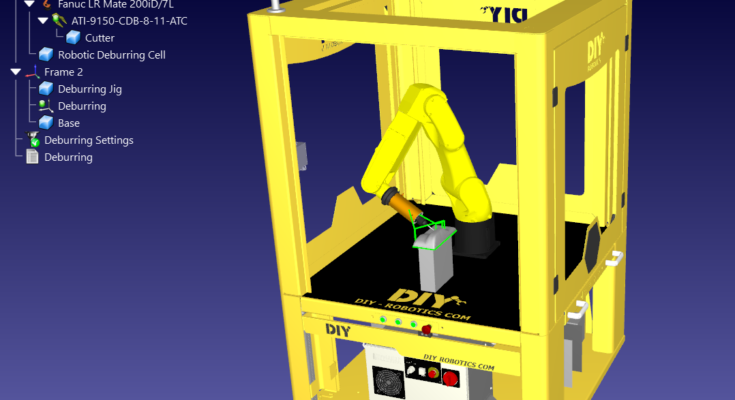
Unity
Unity is a powerful simulation platform that is not exclusively for robotics but has gained popularity in the field due to its stunning visual fidelity and robust scripting capabilities. Developers can create highly interactive environments that simulate complex robotic behaviors, making Unity a versatile choice for robotics simulation.

AWS RoboMaker
AWS RoboMaker is a cloud-powered simulation platform that provides scalable resources for developing and testing robotics applications. It allows developers to run simulations in the cloud, enabling efficient testing and deployment of robotic systems without the need for extensive local hardware resources. These software platforms each offer unique features and advantages, making them suitable for various applications in robotic simulation. As the field of robotics continues to evolve, these tools are essential for advancing the development of more capable and intelligent robotic systems.
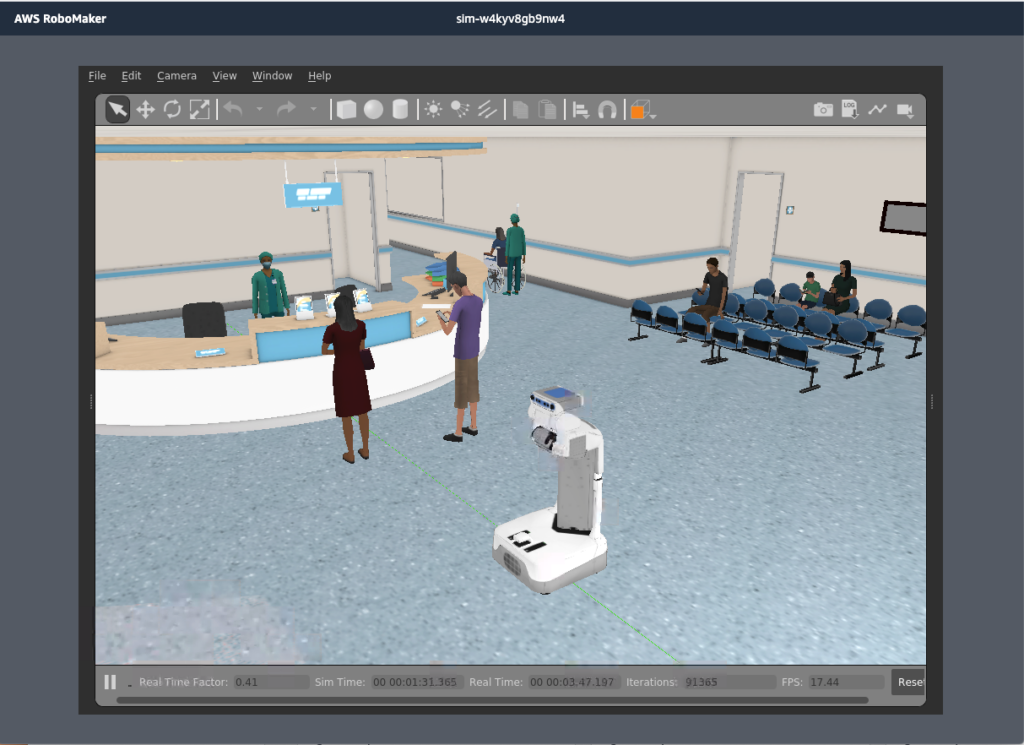
Use Cases
Simulation software plays a critical role in various educational and professional contexts, particularly in fields such as robotics, engineering, and science. These applications offer immersive and interactive learning experiences that allow users to practice skills in safe and controlled environments.
Multimedia and Immersive Learning
One significant use case of simulation software is in creating multimedia content that establishes a realistic context for learners. By utilizing still images, videos, audio narratives, and graphics, simulations can provide a rich, immersive experience that reflects real-world scenarios. This immersion is vital for fields requiring extensive contextual knowledge, enabling learners to grasp significant characteristics pertinent to their professional domains.
Interactivity and Role-Play Scenarios
Simulations also facilitate interactivity by allowing learners to engage with various virtual stakeholders, such as characters or virtual agents representing competitors, co-workers, or clients. For instance, role-play scenarios in social sciences help students understand different perspectives and develop empathy through simulated interactions. This interactivity not only enhances engagement but also mirrors the collaborative environments found in actual workplaces.
Practical Applications in Science Education
In science education, virtual labs enable students to conduct experiments that may be too dangerous, expensive, or time-consuming in a physical setting. These labs provide an essential tool for learners to practice their skills safely while fostering a deeper understanding of scientific concepts. For example, medical students can practice surgeries in a virtual environment, thereby enhancing their practical skills without the risks associated with real-life procedures.
Advanced Technologies: Virtual and Mixed Reality
Emerging technologies like virtual and mixed reality have further broadened the scope of simulation applications. They allow students to explore historical sites, conduct virtual field trips, or engage in advanced training simulations, such as surgical procedures or complex engineering tasks. These practical applications highlight the versatility of simulations in promoting active learning and enhancing student engagement.
Feedback and Interactive Tools
Tools such as FeedbackFruits facilitate the creation of interactive content within simulation environments. For instance, the Interactive Document tool allows educators to present case studies in an engaging format, where learners can actively participate by making decisions and observing the consequences of their choices. Such features encourage critical thinking and enhance learner retention of information.
Collaborations and Future Directions
In addition to standalone applications, simulation software is increasingly being integrated into collaborative projects. For example, institutions like RACE aim to pair students with local manufacturers for research projects, enhancing hands-on experience through simulation-based learning. This approach not only enriches the educational experience but also prepares students for real-world challenges in their respective fields.
By harnessing the capabilities of simulation software, educators can create rich, engaging learning experiences that effectively bridge the gap between theory and practice, fostering higher-order thinking and authentic learning in higher education.
Benefits of Using Simulation Software
Simulation software offers significant advantages in the design, development, and testing of robotic systems. These benefits not only enhance the efficiency of projects but also contribute to cost savings and risk mitigation throughout the development lifecycle.
Cost Reduction
One of the primary benefits of using simulation software is the reduction in costs associated with robot production. By allowing developers to simulate various design alternatives, projects can proceed without the financial burden of physical prototyping, thereby minimizing expenses related to materials and labor. Additionally, early detection of errors and issues through simulation can lead to further cost savings, as potential construction errors can be identified and resolved before actual installation.
Risk Mitigation
Simulation enables the testing of robot behaviors and interactions in a virtual environment, which helps to diagnose and resolve software issues without the risks associated with physical testing. This capability allows for comprehensive testing of various scenarios, ultimately resulting in safer and more reliable robotic systems.
Improved Development Efficiency
The ability to perform simulations in stages is particularly beneficial for complex projects, as it allows teams to iteratively refine their designs and functionalities. For instance, Ethos, a robotics company, found that conducting simulations in-house improved their responsiveness and efficiency compared to outsourcing. Moreover, simulation software can significantly reduce the time required to design and install new robotic systems, with some estimates indicating a 60% decrease in design time.
Enhanced Educational Opportunities
Simulation software plays a vital role in STEM education by providing immersive and interactive experiences. This approach facilitates hands-on learning and experimentation, making it an effective tool for teaching complex concepts in fields such as uncrewed aircraft systems (UAS) and robotics. The integration of interactive simulation platforms in online learning environments further enhances engagement and understanding among students.
Flexibility and Compatibility
Modern simulation software platforms are often compatible with a wide range of programming languages, such as C/C++, Python, and Java. This flexibility allows developers to choose tools that best suit their specific needs and projects, ensuring that the simulation process is as seamless and efficient as possible.
Challenges and Limitations
Software for robotic simulation faces several challenges and limitations that can impact usability, effectiveness, and user experience.
User Interface Design
A key challenge in robotic simulation software is the design of the user interface (UI). According to established usability principles, the interface should be flexible and efficient, allowing users to navigate quickly with minimal interactions. This includes employing shortcuts, function keys, and customizable settings. Furthermore, an aesthetic and minimalist design is essential to reduce clutter and enhance the user’s ability to focus on relevant tasks. The visibility of system status is crucial; users should be informed of operations in an easily understandable manner to prevent confusion.
Error Prevention and Management
Another significant limitation arises in the realm of error prevention. Users often struggle with identifying and rectifying errors, particularly when these issues exceed their level of expertise. To mitigate this, systems should be designed to flag potential errors or prevent them entirely. This entails thorough testing and refining of the software to ensure that it meets user needs effectively, prioritizing features that deliver the most value.
Methodological Limitations in Research
The research surrounding robotic simulation software is also constrained by methodological limitations. For instance, studies not appropriate for the scope of analysis must be excluded, including outdated research or those with significant flaws. This curation process can limit the breadth of insights available to developers and researchers in the field, hindering advancements in software capabilities.
Technical and Computational Constraints
On a technical level, the accuracy of robotic trajectories in simulations is heavily dependent on the trajectory generation methods used. Recent advancements have focused on machine learning techniques, yet these methods require substantial computational resources and robust data inputs. The reliance on sophisticated algorithms can create a barrier for users who may not have access to advanced computational hardware.
Accessibility and User Diversity
Finally, accessibility remains a critical issue in robotic simulation software. Designing for all users, including those with disabilities, is essential yet often neglected. This includes ensuring readable fonts, sufficient color contrast, and compatibility with assistive technologies, which are necessary to create an inclusive user experience. Addressing these challenges is vital for the continued development and improvement of robotic simulation software, ultimately enhancing usability and expanding its applications across various fields.
Future Trends
The field of robotic simulation is rapidly evolving, with significant advancements expected in the coming years. One major focus is the enhancement of pre-trained models to improve adaptability in diverse environments, aiming to accelerate the learning process while minimizing the need for human input. This shift could lead to broader generalization capabilities, making robotic systems more resilient to various disturbances.
Moreover, the demand for distance education tools, especially in STEM fields, is anticipated to continue rising, driven by ongoing developments in technology and a need for flexible learning environments. This presents an opportunity to incorporate internet-connected systems into computer science education, ensuring that students are equipped with the necessary knowledge in robotics and distributed computing.
As industries increasingly embrace artificial intelligence (AI), there is a growing emphasis on integrating AI-driven simulations for more effective training and learning outcomes. Synthetic data generation is also becoming popular, allowing for faster computation and enhanced testing of robotic behaviors under realistic conditions.
Furthermore, mixed reality technologies hold promise for bridging the gap between simulation and real-world application, facilitating interactions among physical and virtual objects. Looking ahead, platforms such as FluidLab aim to refine their simulation capabilities by developing closed-loop policies that utilize real-time environmental data for fluid manipulation tasks. This evolution could lead to significant advancements in complex robotic applications, benefiting both research and practical implementations.


